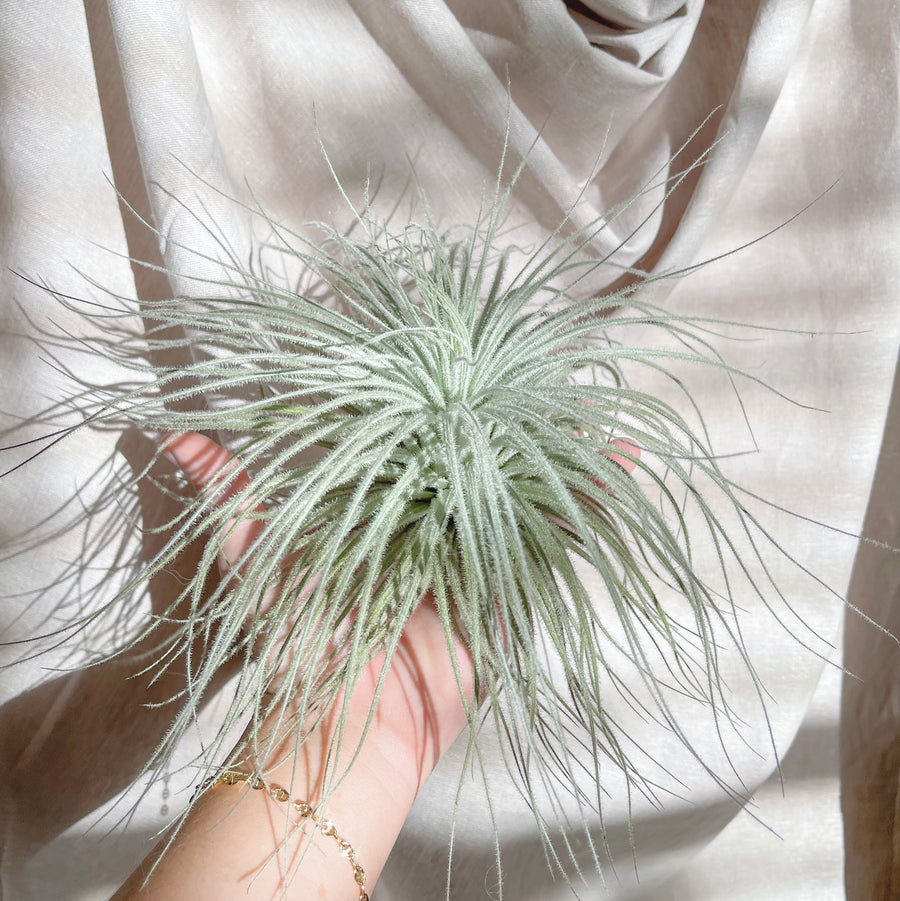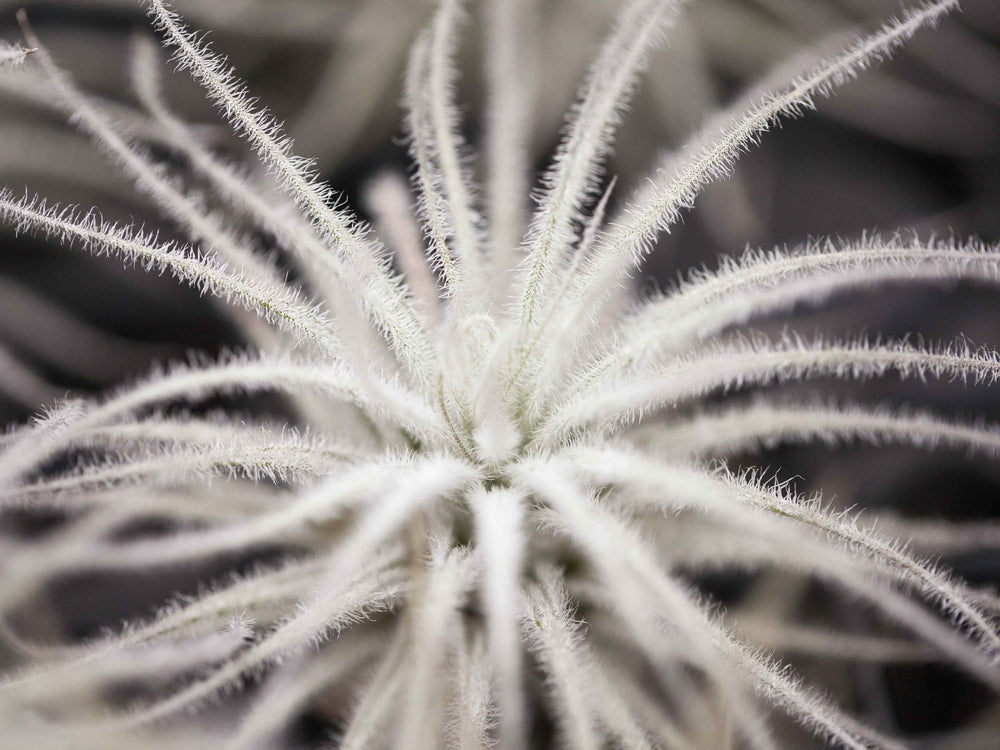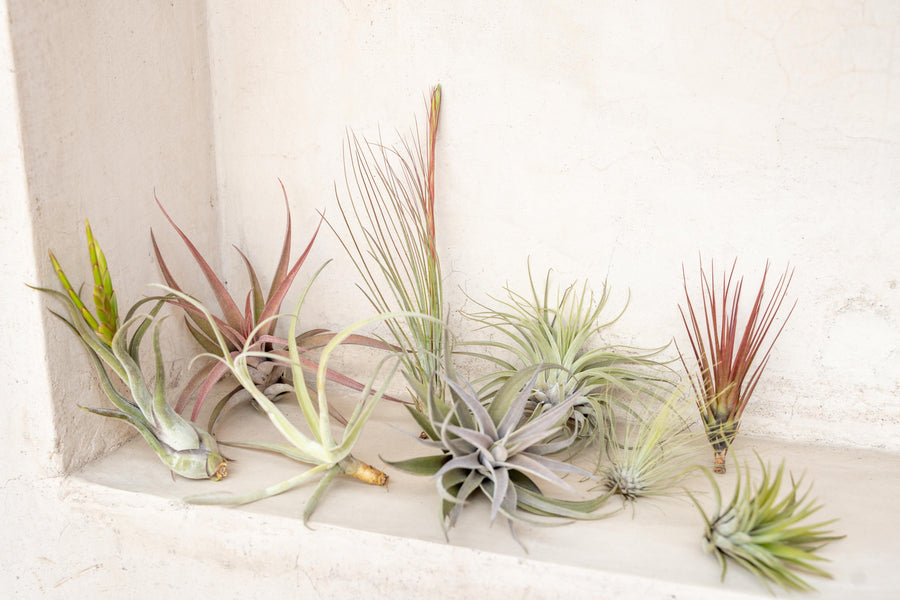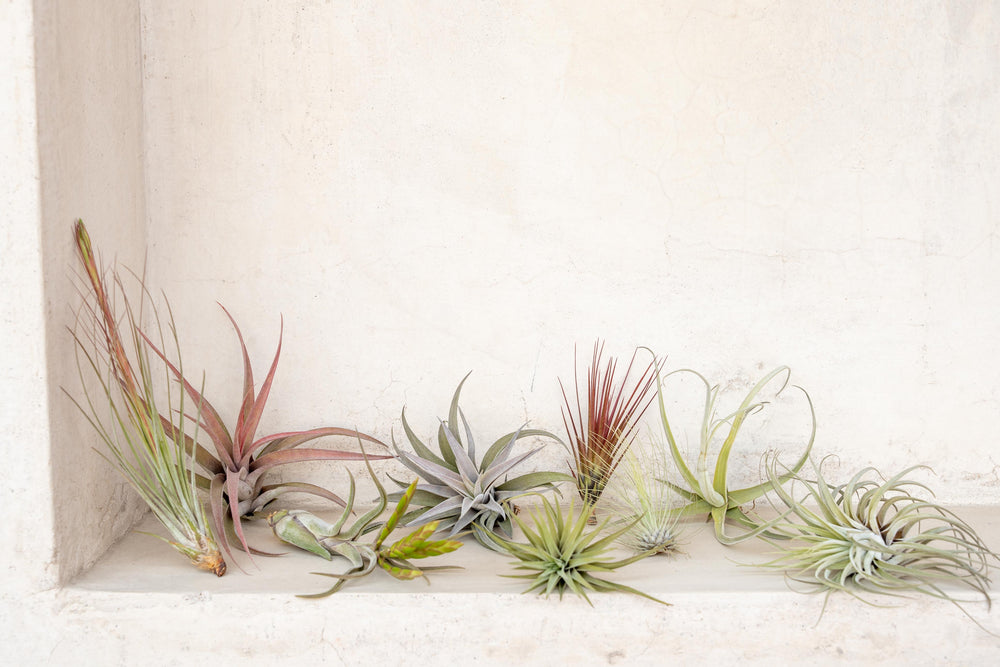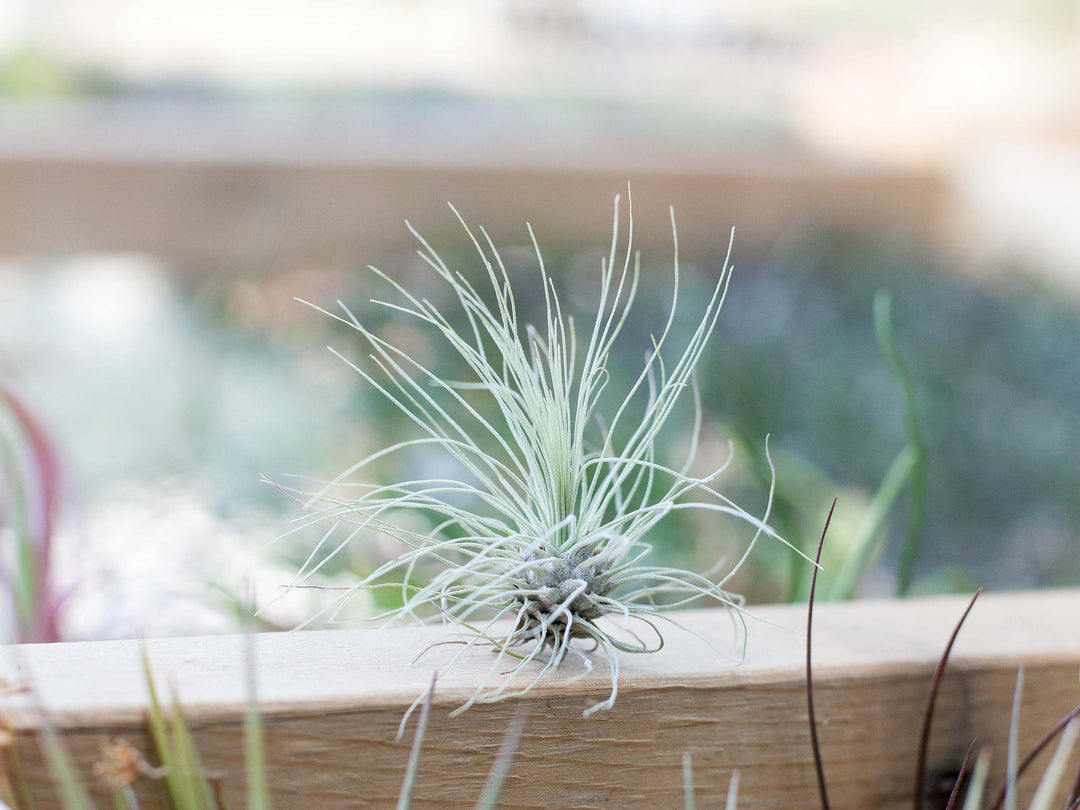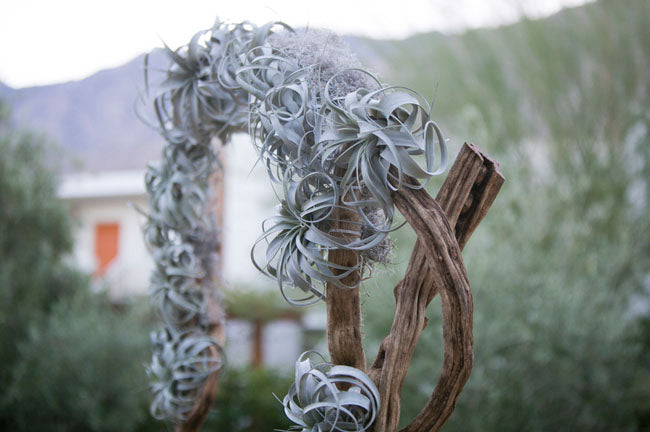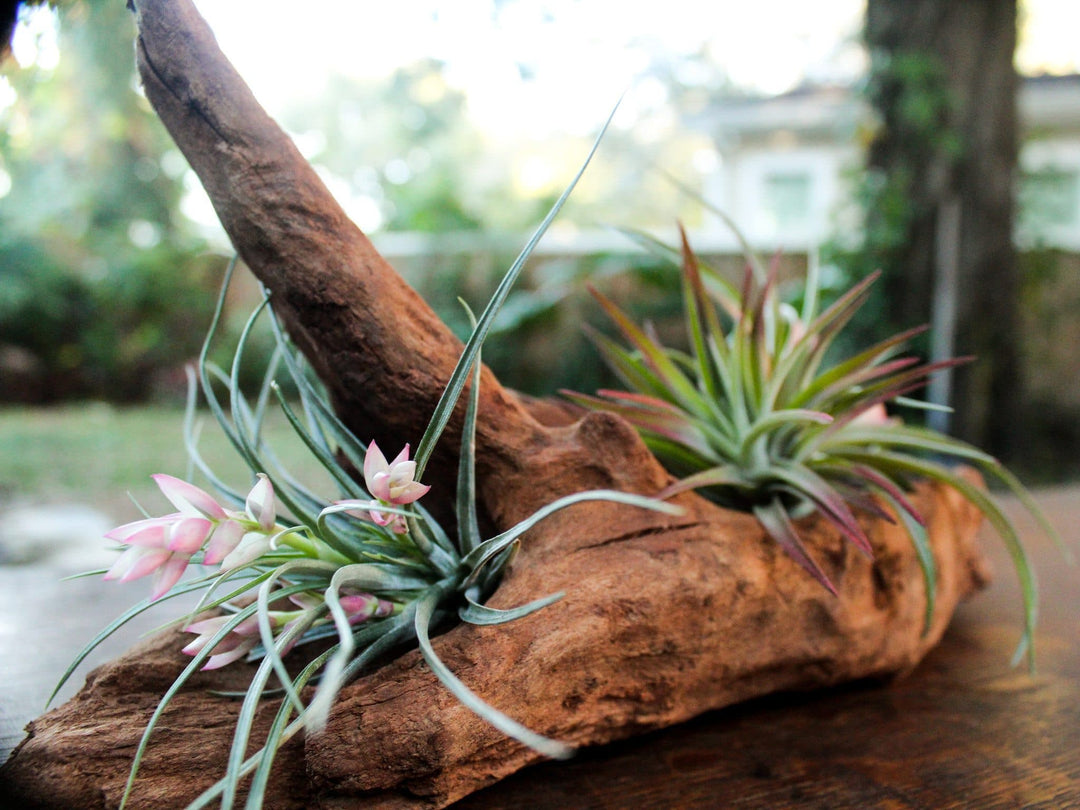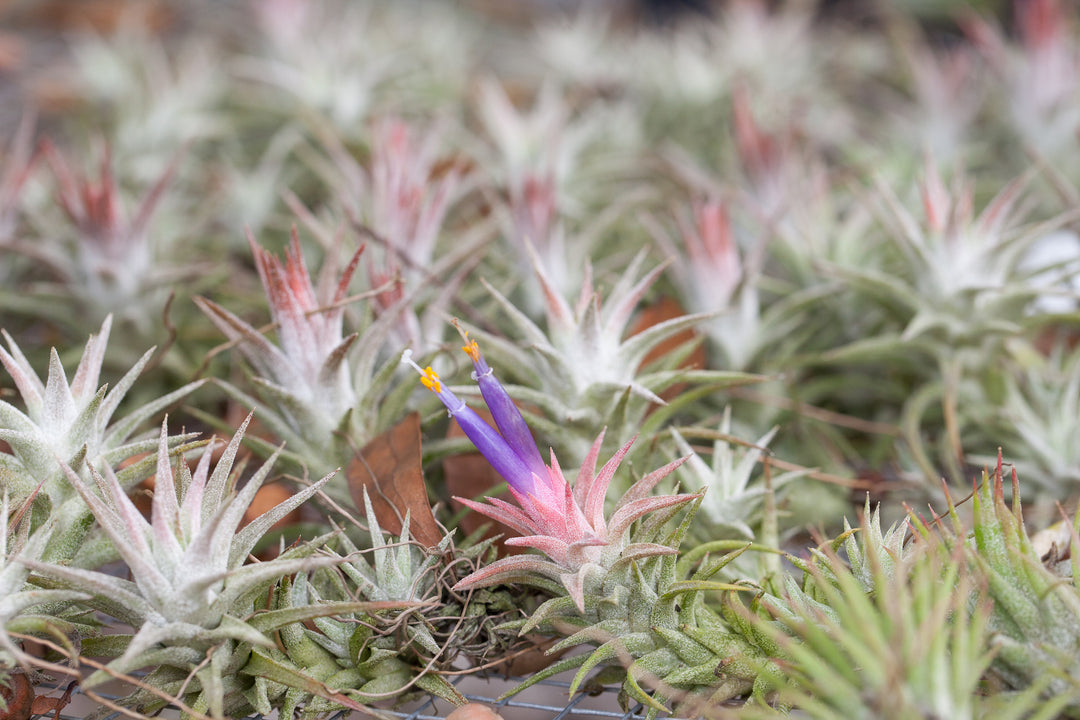What's wrong with my air plant?
What's wrong with my air plant (Tillandsia)? We get this question often from customers and even folks just visiting our site looking for information about caring for their air plants. While knowing exactly what happened to the plant can be tough, looking at the "big picture" can sometimes help us figure out what went wrong and make the proper adjustments.
To start, we need to look at what type of plant you have and take into account its natural growing habitat. Is it a green leafed plant that's more mesic? Or is it a silver leafed plant that is more xeric? This is an important question, because it will help determine the type of care you should be giving your plant and what environment works best. Check out our Mesic Vs Xeric article to learn the difference between these types of plants. A good rule of thumb is that green leafed/ mesic air plants are going to like more moisture and less sunlight versus a silver leafed xeric plant like the xerographica. Keep in mind that some air plants can fall in between these classifications, so labeling plants mesic or xeric is not an exact science. It does however give you a little clue into the ideal environment for your type of Tillandsia and ultimately the care you should give it.
Consider these topics...
Undertanding Mesic vs. Xeric
We talk a lot about air plant care but as there are many different Tillandsia varieties from a range of different native habitats. The care that your air plant will require will vary significantly depending on the species. Air plant care is not necessarily “one size fits all”.
How to Water Air Plants
While Tillandsia are easier to care for than many other plant varieties, they do require some maintenance and tender loving care–and water is a big factor in their overall health.
Importance of Air Circulation
Air circulation is one of the most important aspects of an air plant’s care. Why is air circulation so important? Well, air plants have trichomes which help them absorb as much moisture from the air as possible, and they need air flow in order to use their trichomes, as well as dry after being watered.
Most issues with Tillandsia (air plants) stems from incorrect care for the type of plant and its specific needs. Too much moisture for a plant that likes arid and dry conditions will ultimately end up with issues. Same goes for air plants that like a lot of moisture like the brachycaulos or stricta, you would need to water these plants more than a silver leafed xerographica or it will gradually dehydrate and you will begin to see dry and brown leaf tips as the plant eventually shrivels up and dies from dehydration. We surely dont want that!
Once we have figured out the ideal natural environmental conditions, you should be able to figure out where you differed in the care which caused the issues and you can adjust accordingly. Whether it be more or less water, more or less sunlight, etc.
While incorrect care is a large part of why people have air plants that die, there are also many other factors that can come into play. Things like light, water, and air are all very important to the survival of your air plant. For more in depth care instructions, visit our air plant care page. Remember that air plant care guidelines are just guidelines, and there is no magic formula that works for everyone. Your specific needs will vary depending on all the different aspects we discussed above.
Below we have compiled a working list of questions/concerns we get from customers and visitors to our website. Our hope is to be your online Air Plant Source, and to not only provide quality air plants and products but to also to provide information and serve as an educational tool for air plant collectors all around the world.
Diagnosing by symptoms
My Air Plant Has Brown Tips
Browning leaf tips is very common in air plants, especially varieties that have wispy, delicate leaves like the T. ionantha or T. fuchsii v gracilis. This doesn’t necessarily mean that you are doing anything wrong, as it is common for slight browning to occur soon after your plants arrive in the mail.
My Air Plant Has Leaf Spots
If you notice white patches or brown leaf spots, your plant could be suffering from over or under-watering or, in some cases, a fungal issue. If your air plant has developed fungus, be sure to isolate the air plant to prevent the spread to other plants and try treating it with a natural fungicide.
My Air Plant is Falling Apart
Just a few days ago your air plant seemed fine. You watered it just like you normally do, and now a few days later, it’s completely falling apart! What is happening? Sorry to say, but your little air plant may be the victim of wet rot.
Answers to Common Problems
Sorry to say, but your little air plant may be the victim of rot. Maybe you left your plants in their bath a little too long, or you forgot to shake out the excess water from the leaves before putting it back in its place. Whatever it was, somehow water sat amongst the leaves and base of your plant which caused it to rot. Also, rot can be caused by a lack of water. Learn more about what might be wrong with your air plant in our article What's Wrong With My Air Plant: Rot.
Browning of the leaf tips is very common in air plants, especially varieties that have thin leaves like the ionantha or fuchsii v gracilis. This doesn’t necessarily mean that you are doing anything wrong. It is common for slight browning to occur soon after your plants arrive in the mail. This may be a sign that your air plant is adjusting to its new environment. When plants are stressed, they may display this with browning of their leaf tips. This is one scenario where misting your plant between waterings may be beneficial to help prevent leaf tips from browning. Causes of dried leaf tips can be too much sun or not enough water. Try pulling back on the light exposure and give the plant a little more frequent hydration.
Dryness and wilting can be caused by under watering, lack of light, or even too much light, and poor airflow. Learn more about the light needs of air plants in our article How Much Light Do Air Plants Need? Also, if your plant is in a terrarium that doesn't allow for air flow, this can cause your plant to die.
If your air plant is turning yellow, it can be caused by too much light or too much water. When a plant turns yellow, it is saying "help!" Cut back on watering and if your plant is in an area with direct sun, move it to an area of more indirect light. Yellowing can also be caused by over fertilization or copper poising. Exposure to cold temperatures can also cause yellowing of the plant, which will happen before it gets mushy and ultimately dies.
Brown spots can be caused by many things. One of the most common causes is from too much sunlight and the plant is sunburned. This can be amplified if the plant is wet and getting too much direct sunlight. Another source of brown spots can be from over fertilizing. Fertilizer can burn your air plant's leaves. Brown spots can also be from a pest, or from the plant getting stressed in transit, especially if it is cold where you live. Lastly, brown spots can be a sign if fungus or mold starting such as a brown leaf spot disease. If this is the case you can try to spot treat with a fungicide that is formulated for roses. This type of fungicide will have no copper and be low in sulfur.
After an air plant blooms, the plant most often produces a pup or offset. You might notice that the mother plant starts to wilt or die off which is perfectly normal. Some plants produce more pups than others and may survive longer, while others might wither away once the pup is large enough to survive on its own. Learn more about pups in our article about air plant propagation.
While this is hard to say without seeing a picture, the answer is likely trichomes! Trichomes are small cells on the leaf of tillandsia (air plants) that assist in water collection and protection from being burned by sunlight. Some xeric varieties like tectorum will have an abundance of trichomes that is very noticeable while other mesic varieties like bulbosa will have trichomes that are almost unnoticeable. We have several articles to learn more including All About Trichomes and a follow up article Trichomes In depth which also discusses the CAM process air plants go through.
Need more help?
Have a question that wasn't answered here or have an issue that you need help diagnosing? Shoot us an email and we'll see if we can help! Info@airplantdesignstudio.com


